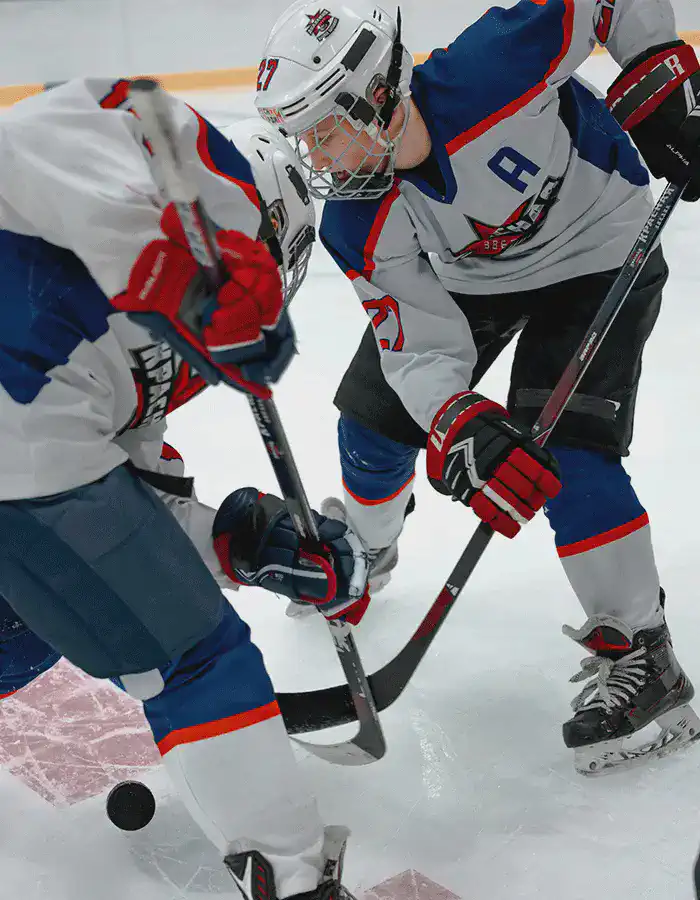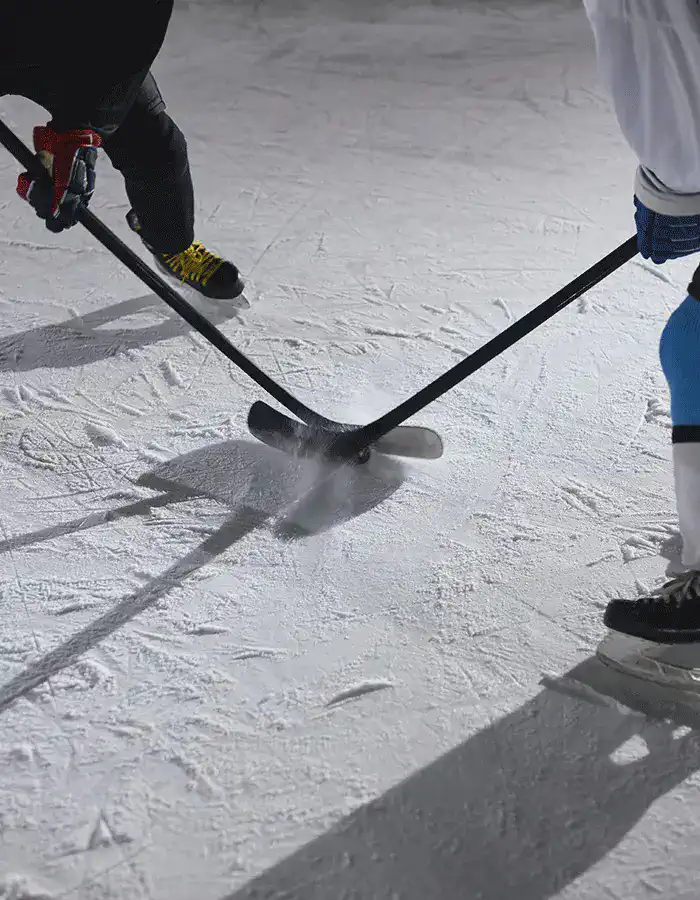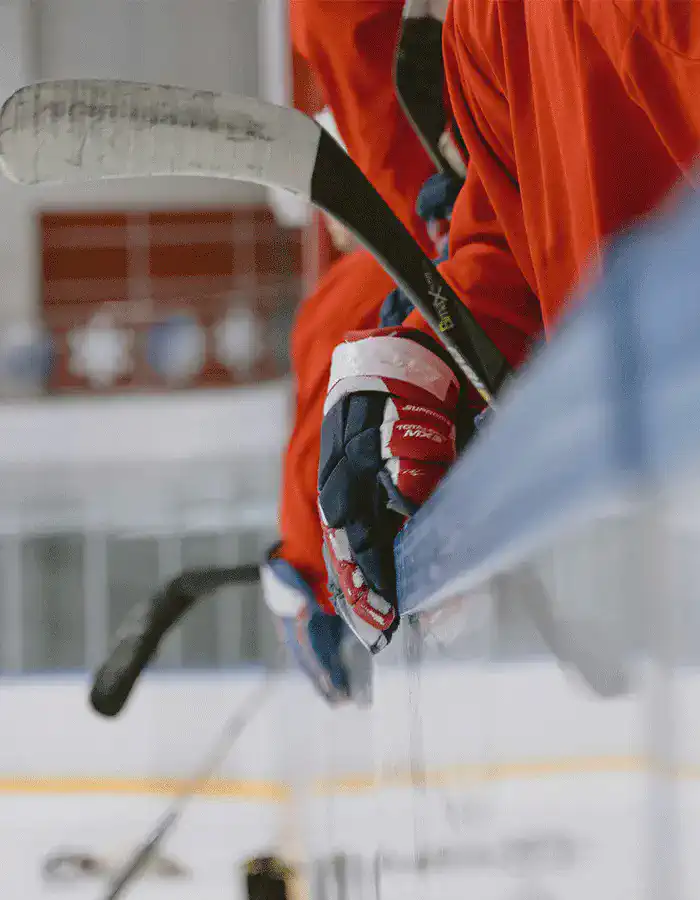Ice hockey, an exhilarating sport known for its speed and physicality, is not only a test of athleticism but also of strategic acumen. This comprehensive guide delves into the fundamental rules and gameplay mechanics that define hockey, from the regular season’s climax in the thrilling playoffs to the nuances of penalties like cross-checking and hooking. Whether you’re a seasoned fan or new to the sport, understanding these aspects enhances your appreciation of the game and heightens the excitement of every match.
When do the Hockey playoffs start? Key dates and schedule details
As the regular season of hockey comes to a close, fans and teams alike are eagerly looking forward to the playoffs-a time when the intensity on the ice reaches its peak. If you’re wondering when the hockey playoffs start, you’re in the right place. Here, we provide a comprehensive guide to the key dates and schedule details you need to know to keep up with the action.
Typically, the National Hockey League (NHL) playoffs begin in mid-April, shortly after the regular season concludes. The exact start date for this year’s playoffs is April 14th. This marks the beginning of a grueling battle for the coveted Stanley Cup, involving the top 16 teams-8 from each conference. A full calendar of hockey events for 2024 is available here.
Format and progression
The playoffs are structured in a best-of-seven series format across four rounds: the First Round, Second Round, Conference Finals, and the Stanley Cup Finals. Each round determines who advances based on which team wins four out of the seven games first.
- First round: This initial phase pits the highest-seeded team in each conference against the lowest-seeded remaining team. Expect fierce competition right from the start.
- Second round: Also known as the Divisional Finals, the winners from the first round face off within their respective divisions.
- Conference finals: The Eastern and Western Conference champions are decided in this round, setting the stage for the ultimate showdown.
- Stanley cup finals: The climax of the NHL season, where the Eastern and Western Conference Champions battle for the championship title.

Venues and viewing options
Playoff games are hosted at the home arenas of the qualifying teams, providing home ice advantage that can be crucial in these intense matchups. For fans unable to attend the games in person, extensive coverage is available through various broadcasting networks and streaming services, ensuring you don’t miss a moment of the action.
Why this schedule matters
Understanding the schedule helps fans plan their viewing and ensures they don’t miss any critical games, especially as the rounds progress and the stakes get higher. It also allows for strategic analysis and predictions based on team performances leading up to the playoffs.
What is cross checking in Hockey? Understanding the rule and its impact
Cross-checking is an illegal move in hockey where a player uses their stick horizontally across an opponent’s body. This dangerous action can lead to severe injuries and incurs strict penalties, including major penalties or game misconduct.
Defining cross-checking
Cross-checking occurs when a player uses the shaft of their hockey stick, held with both hands, to forcefully push or hit an opponent. This action can be penalized whether it occurs on the player’s body or stick.
The rule explained
According to the National Hockey League (NHL) Rule Book, cross-checking is defined under Rule 59. The rule states that any player who “cross-checks, trips or charges an opponent” may be subject to a minor penalty of two minutes. If the action is deemed excessively forceful or causes injury, the penalty can escalate to a major penalty and a game misconduct, potentially leading to further disciplinary action.
Impact on the game
The enforcement of the cross-checking rule is crucial for player safety. Hockey is a sport that naturally involves a degree of physical contact; however, regulating actions like cross-checking helps prevent serious injuries and maintains the sport’s integrity.
- Player safety: Ensuring players are not subjected to dangerous hits is a top priority. The cross-checking rule helps protect players from potential spinal injuries and concussions.
- Game integrity: Strict enforcement of penalties like cross-checking ensures that the game remains fair and competitive. It discourages players from engaging in unsafe play that could otherwise give their team an unfair advantage.
- Strategic play: Teams must strategize more carefully with an understanding of the penalties. Coaches educate players on legal defensive tactics, emphasizing skill over brute force.
For fans, knowing the rules enhances the viewing experience, providing deeper insights into the decisions made on the ice. For players, a clear understanding of what constitutes a cross-check is essential for playing within the rules and avoiding penalties that could disadvantage their team.

Exploring the possibility of draws in the game: Can you tie in Hockey?
In the NHL , regular-season games can indeed end in a tie. If the score is level at the end of regulation, teams proceed to an overtime period followed by a shootout if necessary, ensuring a decisive outcome.
Historically, hockey games could end in a tie during the regular season if neither team was able to score during overtime. However, this changed with the introduction of the shootout rule by the National Hockey League (NHL) in the 2005-2006 season. Since then, regular season games that remain tied after a five-minute, three-on-three overtime period proceed to a shootout, ensuring that each game has a winner.
Overtime and shootout details
During the overtime period, teams play with fewer players on the ice, which increases the chances of scoring. If the game remains tied after overtime, it goes to a shootout, where selected players from each team take turns trying to score against the opposing goaltender. The team with the most goals after three rounds wins the game.
- Overtime: Three-on-three format, which emphasizes skill and open ice play.
- Shootout: Players attempt to score goals in a one-on-one confrontation with the goaltender.
In the playoffs, the rules change significantly. There are no shootouts in the postseason. Instead, games tied at the end of regulation extend into 20-minute sudden-death overtime periods. These continue until a team scores, which can lead to multiple overtime sessions.
Understanding how ties are resolved in hockey adds to the excitement of watching a game, particularly as the end of regulation nears in a tied game. For players and teams, mastering the skills needed to succeed in overtime and shootouts is crucial, as these scenarios are often pivotal in determining standings and playoff qualifications.
How do points work in Hockey? A detailed explanation of scoring and standings
Hockey, known for its fast pace and exciting gameplay, has a scoring system that might seem complex to new fans. Understanding how points are awarded, both during the game and in league standings, is essential for anyone looking to deepen their appreciation of the sport. This article provides a detailed breakdown of the scoring system in hockey and explains how these points affect team standings.
In hockey, points are scored when a player sends the puck into the opponent’s net, which is guarded by the goaltender. Each goal is worth one point. Unlike some other sports, hockey maintains a straightforward scoring method during gameplay:
- Goal: When the puck crosses the goal line within the net, a goal is awarded, giving the scoring team one point.
- Assists: Up to two players who passed the puck to the scoring player can receive assists, which are noted for individual statistics but do not add to the overall game score.
Points in league standings
The points system in league standings is where it gets more intricate. Points are awarded not just for wins but also for losses under certain conditions:
- Win (W): A team earns two points in the standings for a win, whether it occurs in regulation time, overtime, or a shootout.
- Overtime loss (OTL): If a team loses in overtime or a shootout, they receive one point. This rule encourages teams to play aggressively in overtime, knowing they have secured at least one point.
- Loss (L): No points are awarded for losses in regulation time.
Standings in the league are primarily determined by the total points a team accumulates throughout the season. The more points a team earns, the higher they rank in their division and conference. These standings determine playoff qualifications and seeding, making every game crucial, especially as the season progresses.
For fans, knowing how points are scored and awarded in standings enhances the viewing experience, allowing for more strategic appreciation of team decisions and performances. For players and teams, strategic decisions often revolve around these points rules, especially in close games nearing the end of regulation.
Understanding penalty minutes and their impact: What is PIM in Hockey?
In the high-energy sport of hockey, penalties are inevitable. But beyond just serving time in the penalty box, these infractions have broader implications on the game and individual player statistics. One crucial aspect to understand is the concept of Penalty Minutes (PIM) and how they are recorded and impact both games and players. This article explores what PIM represents in hockey, how it affects gameplay, and why it’s a significant statistic for teams and players alike.
what is pim?
Penalty Minutes (PIM) in hockey refers to the total number of minutes a player has been penalized due to infractions during games. This statistic is a cumulative record that can offer insights into a player’s style of play and discipline:
- Minor penalties: Most common infractions, like tripping or holding, result in two minutes in the penalty box. These add two penalty minutes to a player’s PIM.
- Major penalties: More severe infractions, such as fighting, are typically penalized with five minutes in the box, accordingly adding five minutes to the player’s PIM.
- Misconduct penalties: These are less common but result in ten penalty minutes. They do not affect the number of players on the ice, unlike minor and major penalties.
Penalty minutes have a direct impact on gameplay. When a player is serving a penalty, their team must play with fewer players (short-handed), which can significantly disadvantage the team:
- The opposing team gains a power play, where they have more players on the ice than the penalized team, increasing their chances of scoring.
- Teams must adapt their strategy when short-handed, often focusing more on defense to prevent scoring opportunities.
- Regular penalties can lead to increased fatigue for the remaining players, affecting overall team performance.
For fans, understanding PIM enhances the viewing experience, as they can appreciate the strategic implications of penalties beyond merely watching players sit out. For players and teams, effective management of PIM is crucial for maintaining competitive advantage and ensuring games are not lost due to disciplinary issues.
What are common hockey penalties? A guide to understanding penalties
Hockey is a dynamic sport filled with high-speed action and intense physical play. While the pace and physicality add to the excitement, they also lead to various penalties, which are crucial for maintaining fairness and safety in the game. This article provides an overview of common hockey penalties, helping fans and players alike understand what leads to penalties and how they impact the game.
Common hockey penalties explained
Here’s a look at some of the most frequently called penalties in hockey:
- Tripping: Called when a player uses their stick, knee, foot, or leg to cause an opponent to fall. This is usually penalized with a minor penalty of two minutes.
- Holding: Occurs when a player grabs an opponent with their hands or wraps their arms around them without an attempt to legally play the puck.
- Interference: Penalized when a player impedes the progress of an opponent who does not have the puck, disrupting their ability to play.
- Hooking: Involves a player using their stick to hook another player, impeding their ability to move freely on the ice.
- Slashing: Called when a player hits an opponent with their stick, or swings their stick at an opponent, regardless of whether contact is made
Each of these penalties affects the game by giving the non-penalized team a power play, where they have a numerical advantage on the ice.
Understanding the rules regarding penalties is essential for players to avoid unnecessary infractions and for fans to fully appreciate the strategic elements of the game. Coaches also need to prepare their teams to handle and adapt to both power play and penalty kill situations.
What is boarding in Hockey? Explaining the penalty and its consequences
Boarding occurs when a player forcefully checks an opponent into the boards from behind, a move fraught with injury risks. Penalties for boarding can range from minor to major, depending on the impact’s severity.
According to the National Hockey League (NHL) Rule Book, a boarding penalty is assessed when a player pushes, trips, or checks an opponent in a manner that causes the opponent to hit or impact the boards violently. The severity of the penalty can vary based on the intensity of the hit and the resulting injury:
- Minor penalty: Typically two minutes for a hit that is deemed dangerous but causes no apparent injury.
- Major penalty: Five minutes can be assessed if the hit results in injury.
- Game misconduct: In severe cases, a game misconduct penalty can be given alongside a major penalty, ejecting the player from the game.
The boarding penalty not only serves as a deterrent against dangerous play but also has strategic implications during a game:
- The penalized team plays short-handed, giving their opponents a numerical advantage on the ice.
- Frequent severe penalties like boarding can disrupt team dynamics and lower morale.
- Such penalties can increase tension on the ice and lead to further infractions.
For players, understanding the specifics of what constitutes boarding is crucial for playing safely and effectively without risking penalties that could disadvantage their team. Fans and coaches also benefit from this knowledge, which enhances their appreciation of the game and strategic understanding.

What is hooking in Hockey?
Hooking involves using the stick to hinder an opponent’s movement by latching onto their body. Depending on the situation, hooking can lead to minor or major penalties, significantly impacting the game flow.
The National Hockey League (NHL) categorizes hooking under minor penalties. The rule stipulates:
- Minor penalty: A player guilty of hooking is assessed a two-minute penalty. During this time, the player’s team must play short one player, giving the opposing team a man-advantage situation, known as a power play.
The implications of a hooking penalty are multi-faceted:
- Power play: The non-penalized team gains a numerical advantage on the ice, which can significantly increase their chances of scoring.
- Game flow: Frequent penalties like hooking can disrupt the rhythm of the game, affecting player performance and game strategy.
- Strategic play: Teams must adapt their strategies to cope with being a player down and capitalize on power play opportunities.
For players, avoiding hooking penalties is crucial for maintaining team strength during the game. Coaches train players on proper stick handling and defensive positioning to minimize penalties. For fans, understanding hooking provides deeper insights into the tactical decisions made during crucial moments of play.
Conclusion
In conclusion, ice hockey’s intricate blend of fast-paced gameplay and strategic complexity offers something for everyone, from die-hard enthusiasts to newcomers. By grasping the essential rules, playoff structures, and penalty regulations discussed, fans can fully engage with the sport, appreciating not just the physical prowess on display but also the tactical depth that makes hockey a beloved winter sport worldwide. Whether it’s following the Stanley Cup playoffs or understanding a referee’s call on cross-checking, this knowledge enriches the hockey viewing experience, making every game both a spectacle and a learning opportunity.